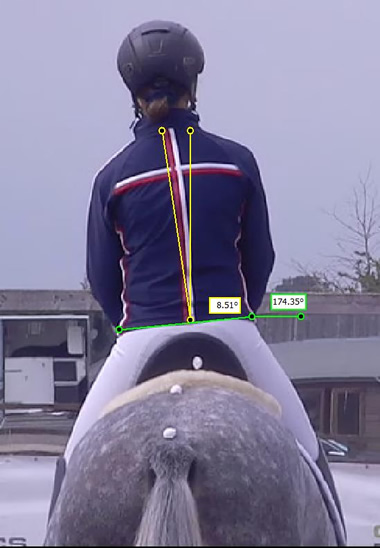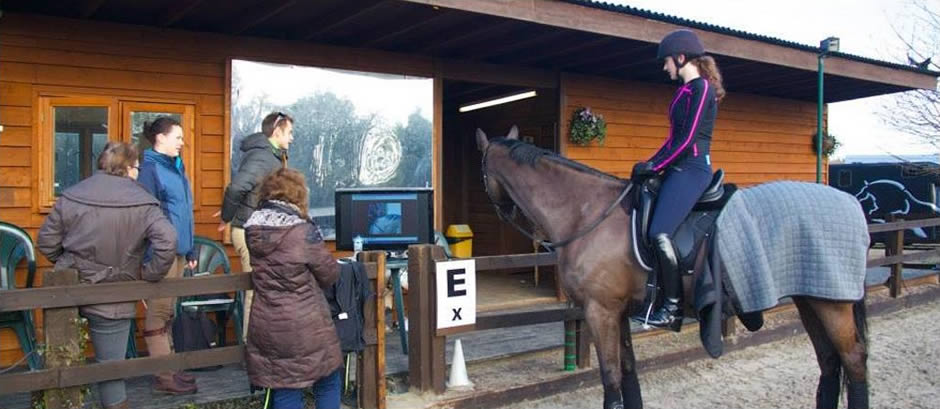|
Rider Biomechanics Case Study
The rider presented for a Centaur Biomechanics Rider Biomechanics session with an objective to evaluate their position, in particular their position on the left rein. The rider reported that her dressage marks were less on the left rein and that she struggled with her half pass left compared to half pass right. Equally, when jumping, the rider felt that she struggled with a left turn.
As with all of our sessions, the rider was fitted with three motion capture markers which were positioned on 1) the middle of the cantle, 2) the sacrum and 3) the caudal tail. Using a high-speed camera capturing at 200 Hz, a standardised exercise test was carried out, capturing trot and canter kinematics on both the left and right rein, as well as capturing lateral movements for the half pass left and right.
 Figure 1. Shows the split screen synchronisation feature within Quintic Sports. Figure 1. Shows the split screen synchronisation feature within Quintic Sports.
The left video shows the rider position on the left rein, whereas the right video shows the rider position on the right rein.
As with all of our sessions, monitors and laptops are positioned on the arena so that the rider can see the slow-motion videos instantly. Following the standardised exercise test, videos captured were processed using Quintic Sports. Quintic Sports software allows for split screen comparison, which in this case is used for left and right rein videos (figure 1). These videos were movement synchronised, allowing for comparisons in the rider’s left and right rein position.
This was repeated for both trot and canter. It could be seen that the rider shifted her seat to the right and had a collapse through her left side (thoracic). This was more noticeable in the canter on the left rein (figure 2). Using the tools in the software, vertical and horizontal lines, allowed greater clarity for the rider to see her positional asymmetries. Equally, we could measure her trunk displacement with the use of the angle measurement tool within Quintic.

Figure 2. Shows the rider’s collapse on the left-hand side when coming off the left rein.
The yellow angle shows the spinal position to the vertical, whereas the green angle highlights the hip angle to the horizontal.
After this initial analysis, the rider worked with Centaur Biomechanics, carrying out several training exercises tailored to help improve body awareness and her position. As previously outlined, following a standardised method, post – intervention data was collected and processed using Quintic Sports – comparisons between pre and post intervention could then be made.
The rider left the session with a greater understanding on the influence her position has on whole horse movement, especially on the left rein. The rider received a written feedback form and USB stick, containing her video files and still images, containing the lines and angles which were captured in Quintic. The feedback recommends she discusses the findings with a physiotherapist in order to improve her posture off horse, in order to transfer the improvements on horse.

|